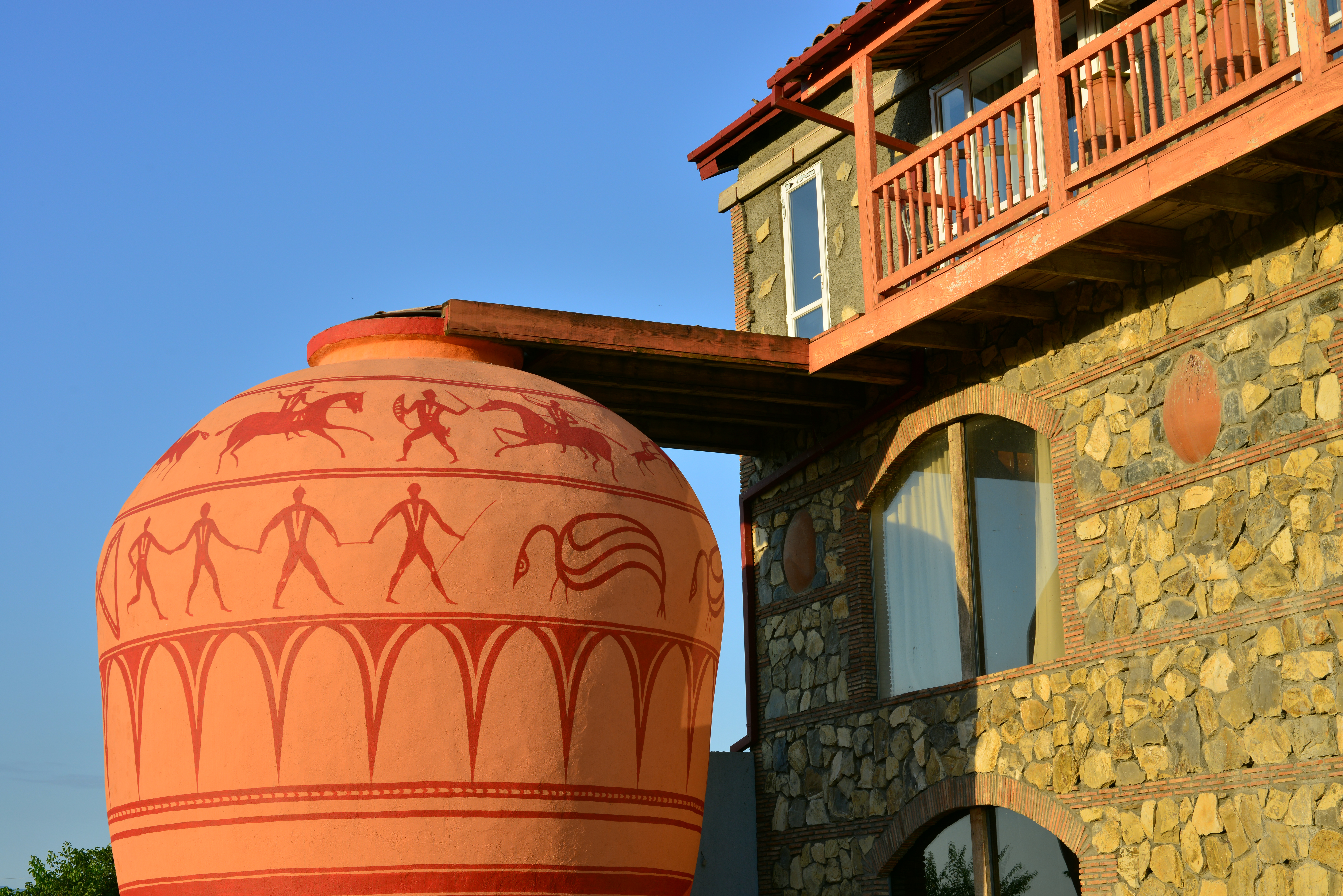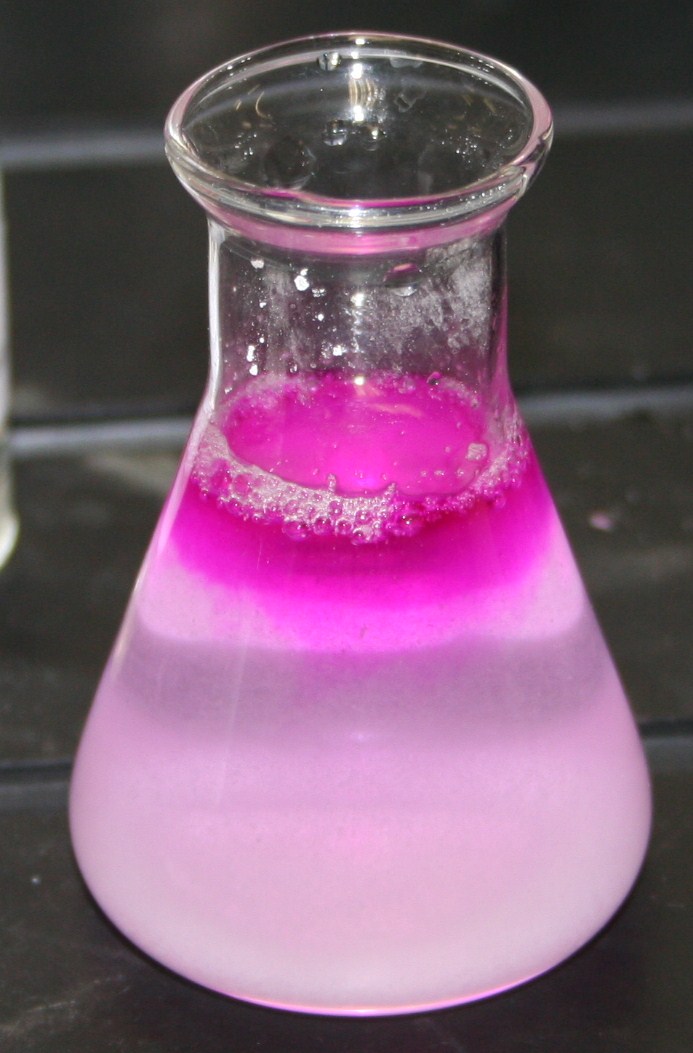|
Mukuzani
Mukuzani ( ka, მუკუზანი ''muk’uzani'') is a dry red Georgian wine made from Saperavi grapes in Mukuzani, Kakheti. Mukuzani is distinct from the other wines made from the same grapes in that it is aged in oak casks for a longer time – at least three years. Mukuzani has a deep red color with a soft smoky scent of oak and berry. The taste begins dry but the oak and fruit flavors quickly come through. As a result of its longer aging, Mukuzani has more complexity than the other wines made from Saperavi grapes. It goes particularly well with steaks and dark meats. The matured wine contains 10.5–12.5% alcohol and has 6.0–7.0% titrated acidity. It has been produced since 1888. Mukuzani is considered by many to be the best of the Georgian red wines made from Saperavi. It has won 9 gold medals, 2 silver medals and 3 bronze medals in international competitions. See also *Georgian wine *Sweetness of wine *List of Georgian wine appellations The following is a lis ... [...More Info...] [...Related Items...] OR: [Wikipedia] [Google] [Baidu] |
Georgian Wine
Georgia is the oldest wine producing region in the world. The fertile valleys and protective slopes of the South Caucasus were home to grapevine cultivation and neolithic wine production ( ka, ღვინო, ''ɣvino'') for at least 8000 years. Due to millennia of winemaking and the prominent economic role it retains in Georgia to the present day, wine and viticulture are entwined with Georgia's national identity. Among the best-known Georgian wine regions are Kakheti (further divided into the micro-regions of Telavi and Kvareli), Kartli, Imereti, Racha-Lechkhumi and Kvemo Svaneti, Adjara and Abkhazia. In 2013, UNESCO added the ancient traditional Georgian winemaking method using the Kvevri clay jars to the UNESCO Intangible Cultural Heritage Lists. History The roots of Georgian viticulture have been traced back by archeology to when people of the South Caucasus discovered that wild grape juice turned into wine when it was left buried through the winter in a shallow pi ... [...More Info...] [...Related Items...] OR: [Wikipedia] [Google] [Baidu] |
Saperavi
Saperavi ( ka, საფერავი; literally "paint, dye, give color") is an acidic, teinturier-type grape variety native to the country of Georgia, where it is used to make many of the region's most well-known wines. It is also grown in Russia and in lesser quantities in Armenia, Moldova, Ukraine, Uzbekistan, Azerbaijan, Australia. Saperavi is also known under the synonyms Didi Saperavi, Kleinberiger, Nerki Khagog, Patara Saperavi, Saparavi, Sapeavi de Kakhetie, Saperaibi, Saperavi de Kachet, Saperavi de Kakhetie, Saperavi Patara, Sapeur, Sapperavi, Sapperavy, Scoperawi, and Szaperavi. Characteristics The berries are medium to large, elliptic or round depending on the type, dark bluish, and thin-skinned; with a maturation period of approximately 5 months and moderate productivity. The leaves are 3-lobed, large, and roundish. Saperavi produces an extractive wine with a characteristic bouquet, a harmonious taste, and pleasant astringency. Its alcoholic strength ranges ... [...More Info...] [...Related Items...] OR: [Wikipedia] [Google] [Baidu] |
List Of Georgian Wine Appellations
{{Georgia-stub ...
The following is a list of Georgian wine appellations. 20 appellations are registered with Sakpatenti, Georgia's national intellectual property center. 18 are described in a book published in 2010, and the 19th and 20th were announced in 2018 and 2019 References Appellations Wine appellations Appellations Wine Wine is an alcoholic drink typically made from fermented grapes. Yeast consumes the sugar in the grapes and converts it to ethanol and carbon dioxide, releasing heat in the process. Different varieties of grapes and strains of yeasts are ... [...More Info...] [...Related Items...] OR: [Wikipedia] [Google] [Baidu] |
Kakheti
Kakheti ( ka, კახეთი ''K’akheti''; ) is a region ( mkhare) formed in the 1990s in eastern Georgia from the historical province of Kakheti and the small, mountainous province of Tusheti. Telavi is its capital. The region comprises eight administrative districts: Telavi, Gurjaani, Qvareli, Sagarejo, Dedoplistsqaro, Signagi, Lagodekhi and Akhmeta. Kakheti is bordered by the Russian Federation with the adjacent subdivisions ( Chechnya to the north, and Dagestan to the northeast), the country of Azerbaijan to the southeast, and with the regions of Mtskheta-Mtianeti and Kvemo Kartli to the west. Kakheti has a strong linguistic and cultural identity, since its ethnographic subgroup of Kakhetians speak the Kakhetian dialect of Georgian. The Georgian David Gareja monastery complex is partially located in this province and is subject to a border dispute between Georgian and Azerbaijani authorities. Popular tourist attractions in Kakheti include Tusheti, Gremi ... [...More Info...] [...Related Items...] OR: [Wikipedia] [Google] [Baidu] |
Berry
A berry is a small, pulpy, and often edible fruit. Typically, berries are juicy, rounded, brightly colored, sweet, sour or tart, and do not have a stone or pit, although many pips or seeds may be present. Common examples are strawberries, raspberries, blueberries, blackberries, red currants, white currants and blackcurrants. In Britain, soft fruit is a horticultural term for such fruits. In common usage, the term "berry" differs from the scientific or botanical definition of a fruit produced from the ovary of a single flower in which the outer layer of the ovary wall develops into an edible fleshy portion ( pericarp). The botanical definition includes many fruits that are not commonly known or referred to as berries, such as grapes, tomatoes, cucumbers, eggplants, bananas, and chili peppers. Fruits commonly considered berries but excluded by the botanical definition include strawberries, raspberries, and blackberries, which are aggregate fruits and mulberries, wh ... [...More Info...] [...Related Items...] OR: [Wikipedia] [Google] [Baidu] |
Steak
A steak is a thick cut of meat generally sliced across the muscle fibers, sometimes including a bone. It is normally grilled or fried. Steak can be diced, cooked in sauce, such as in steak and kidney pie, or minced and formed into patties, such as hamburgers. Steaks are cut from animals including cattle, bison, camel, goat, horse, kangaroo, sheep, ostrich, pigs, reindeer, turkey, deer, and zebu, as well as various types of fish, especially salmon and large fish such as swordfish, shark, and marlin. For some meats, such as pork, lamb and mutton, chevon, and veal, these cuts are often referred to as chops. Some cured meat, such as gammon, is commonly served as steak. Grilled portobello mushroom may be called mushroom steak, and similarly for other vegetarian dishes. Imitation steak is a food product that is formed into a steak shape from various pieces of meat. Grilled fruits such as watermelon have been used as vegetarian steak alternatives. Exceptions, in whic ... [...More Info...] [...Related Items...] OR: [Wikipedia] [Google] [Baidu] |
Dark Meat
In culinary terms, white meat is meat which is pale in color before and after cooking. In traditional gastronomy, ''white meat'' also includes rabbit, the flesh of milk-fed young mammals (in particular veal and lamb), and sometimes pork. In ecotrophology and nutritional studies, ''white meat'' includes poultry and fish, but excludes all mammal flesh, which is considered red meat. Various factors have resulted in debate centering on the definition of ''white'' and ''red'' meat. A common example is the lighter-colored meat of poultry (''white meat''), coming from the breast, as contrasted with darker-colored'' meat'' from the legs (''red meat''). Certain types of poultry that are sometimes grouped as ''white meat'' are ''red'' when raw, such as duck and goose. Some types of fish, such as tuna, sometimes are ''red'' when raw and turn ''white'' when cooked. Terminology The terms ''white'', ''red'', ''light'' and ''dark'' applied to meat have varied and inconsistent meanings in d ... [...More Info...] [...Related Items...] OR: [Wikipedia] [Google] [Baidu] |
Acid–base Titration
An acid–base titration is a method of quantitative analysis for determining the concentration of an acid or base by exactly neutralizing it with a standard solution of base or acid having known concentration. A pH indicator is used to monitor the progress of the acid–base reaction. If the acid dissociation constant (p''K''a) of the acid or base dissociation constant (p''K''b) of base in the analyte solution is known, its solution concentration (molarity) can be determined. Alternately, the p''K''a can be determined if the analyte solution has a known solution concentration by constructing a titration curve. Alkalimetry and acidimetry Alkalimetry and acidimetry are a kind of volumetric analysis in which the fundamental reaction is a neutralization reaction. Acidimetry is the specialized analytic use of acid-base titration to determine the concentration of a basic (synonymous to alkaline) substances using standard acid. Alkalimetry, is the same concept of specialized analyti ... [...More Info...] [...Related Items...] OR: [Wikipedia] [Google] [Baidu] |
Sweetness Of Wine
The subjective sweetness of a wine is determined by the interaction of several factors, including the amount of sugar in the wine, but also the relative levels of alcohol, acids, and tannins. Sugars and alcohol enhance a wine's sweetness, while acids cause sourness and bitter tannins cause bitterness. These principles are outlined in the 1987 work by Émile Peynaud, ''The Taste of Wine''. History ''Vintage: The Story of Wine'', a book authored by British wine writer Hugh Johnson, presents several methods that have been used throughout history to sweeten wine. The most common way was to harvest the grapes as late as possible. This method was advocated by Virgil and Martial in Roman times. In contrast, the ancient Greeks would harvest the grapes early, to preserve some of their acidity, and then leave them in the sun for a few days to allow them to shrivel and concentrate the sugar. In Crete, a similar effect was achieved by twisting the stalks of the grape to deprive ... [...More Info...] [...Related Items...] OR: [Wikipedia] [Google] [Baidu] |






